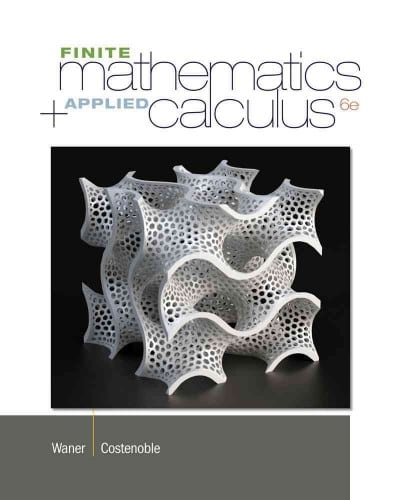Question
You have just opened a restaurant in a large city, and you are deciding what you should charge for a regular- sized soda. You would
You have just opened a restaurant in a large city, and you are deciding what you should charge for a regular- sized soda. You would like to charge a price equal to the average of your competitors, which you believe is $2.58, to inform your decision, you want to learn more about the average price charged by competing restaurants in the area. Using sample data evidence, you are interested in testing whether the prices might be significantly different from the number you assumed. You know that you would not be able to get prices for every restaurant, so you randomly sample 35 and collect their soda prices.
You are assuming that the mean price is $2.58 for all your competitors. When conducting data analysis to test this belief, what is the assumption/guess of the status quo called? Using a confidence level of 99%, test whether the mean soda price of all your competitors is different from $2.58 using the calculated t-statistic and the associated p-value. Report your decision and draw valid conclusions based on the results from your hypothesis testing. While taking your decision and drawing conclusions in the last task above, what error could be possibly be making?
Restaurant SodaPrice
1 $2.09
2 $3.07
3 $2.33
4 $2.50
5 $2.76
6 $2.07
7 $2.07
8 $3.22
9 $2.43
10 $2.36
11 $2.74
12 $2.52
13 $2.80
14 $1.68
15 $3.27
16 $2.68
17 $3.23
18 $3.13
19 $2.64
20 $3.31
21 $2.26
22 $3.34
23 $3.07
24 $2.29
25 $3.36
26 $2.60
27 $2.37
28 $2.86
29 $2.82
30 $2.89
31 $2.28
32 $2.80
33 $2.45
34 $2.58
35 $3.45
Step by Step Solution
There are 3 Steps involved in it
Step: 1

Get Instant Access to Expert-Tailored Solutions
See step-by-step solutions with expert insights and AI powered tools for academic success
Step: 2

Step: 3

Ace Your Homework with AI
Get the answers you need in no time with our AI-driven, step-by-step assistance
Get Started


